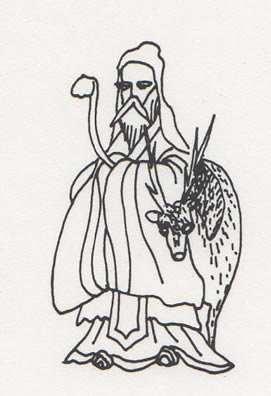|
||
 |
||

@
(C)2001 Japanese Architecture and Art Net Users System.@No reproduction or republication without written permission.
fΪΜeLXgEΚ^ECXgΘΗASΔΜRecΜ³f‘»E]ΪπΦΆά·B
|
||||||
| @ | ||||||
| Juroujin@υVl | ||||||
| KEY WORD :@art history / iconography | ||||||
| @ | ||||||
| Ch: Shoulaoren. A Chinese Taoist god known as the immortal of the Northern Song and also considered the personification of the southern polar star nankyokusei μΙ―. In Japan he became a popular god of longevity and one of the Seven Gods of Good Fortune *shichifukujin ΅_. The legendary Juroujin is said to be based on an actual person alive in the late 11c, who stood nearly six shaku Ϊ (roughly six feet) in height and possessed an elongated head. Besides the distinctive cranium, he is represented in painting with a white beard, carrying a round fan and staff with a sutra hanging from it. Often he is accompanied by a crane or a white stag said to be 1500 years old. Often he also is shown under another symbol of longevity, the plum tree. Of the many Japanese paintings of Juroujin, those by Sesshuu αM (1420-1506), Sesson Shuukei αΊόp (1504?-90?), Kanou Tan'yuu λμTH (1602-74) and Maruyama Oukyo ~R (1733-95) are best known. | ||||||
| @ | ||||||
@ |
||||||
@ |
||||||
| REFERENCES: | ||||||
| @ | ||||||
| EXTERNAL LINKS: | ||||||
| @@ | ||||||
| NOTES: | ||||||
| @ | ||||||
(C)2001 Japanese Architecture and Art Net Users System.@No reproduction or republication without written permission. fΪΜeLXgEΚ^ECXgΘΗASΔΜRecΜ³f‘»E]ΪπΦΆά·B |
||||||
| @ |